How many times have you searched for a gluten free croissant recipe? Be honest. Probably not nearly as many times as you’ve craved one!
You couldn’t be blamed for missing those light, flaky layers of buttery heaven. I certainly have.
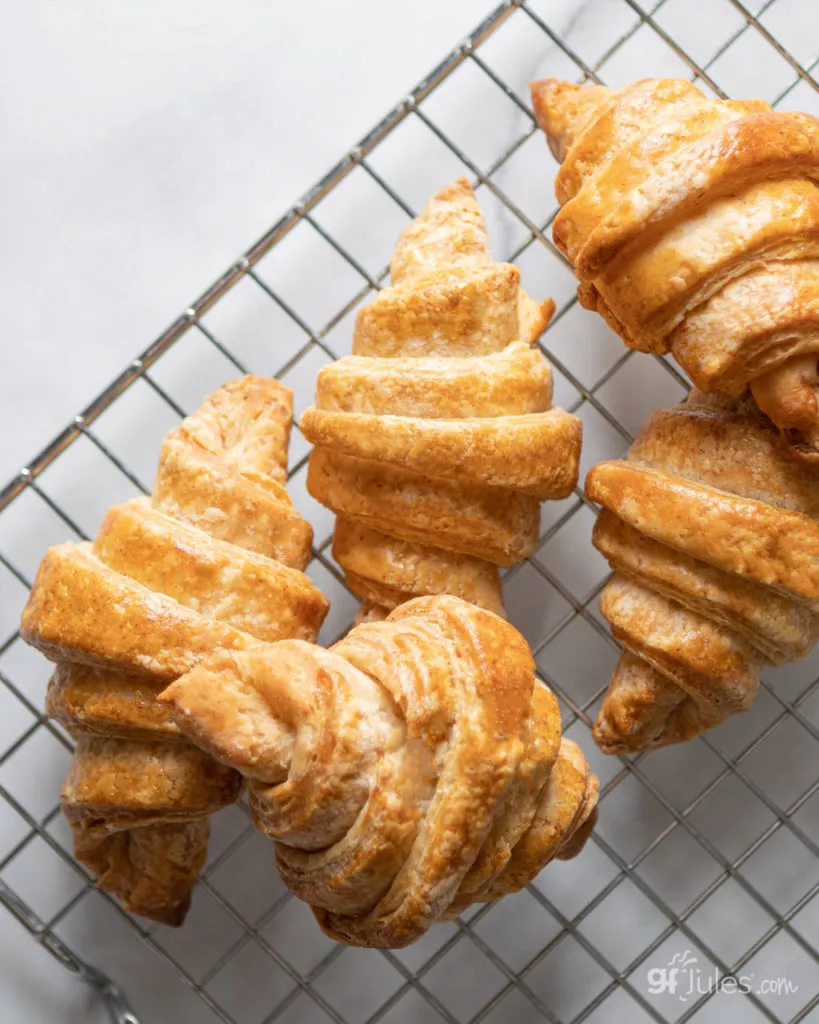
I’ve personally been asked for a gluten free croissant recipe more often than I can recall, and I always point people to my easy gluten free crescent rolls recipe for the shaping technique, but recommend that folks use my gluten free puff pastry recipe for the dough.

Seems like that combination would produce a close approximation to a gluten free croissant — at least it would get you in the neighborhood! My yeast-leavened gluten free puff pastry recipe is divine and super versatile, easy to shape and makes a spot-on Danish pastry (also in the broader croissant pastry family), so why not? But it’s not quite the same.
So why have I never put the two together into an official gluten free croissant recipe before now? I don’t honestly know for sure. It might have something to do with the fact that my “to-do” list is a mile long, but who’s counting?
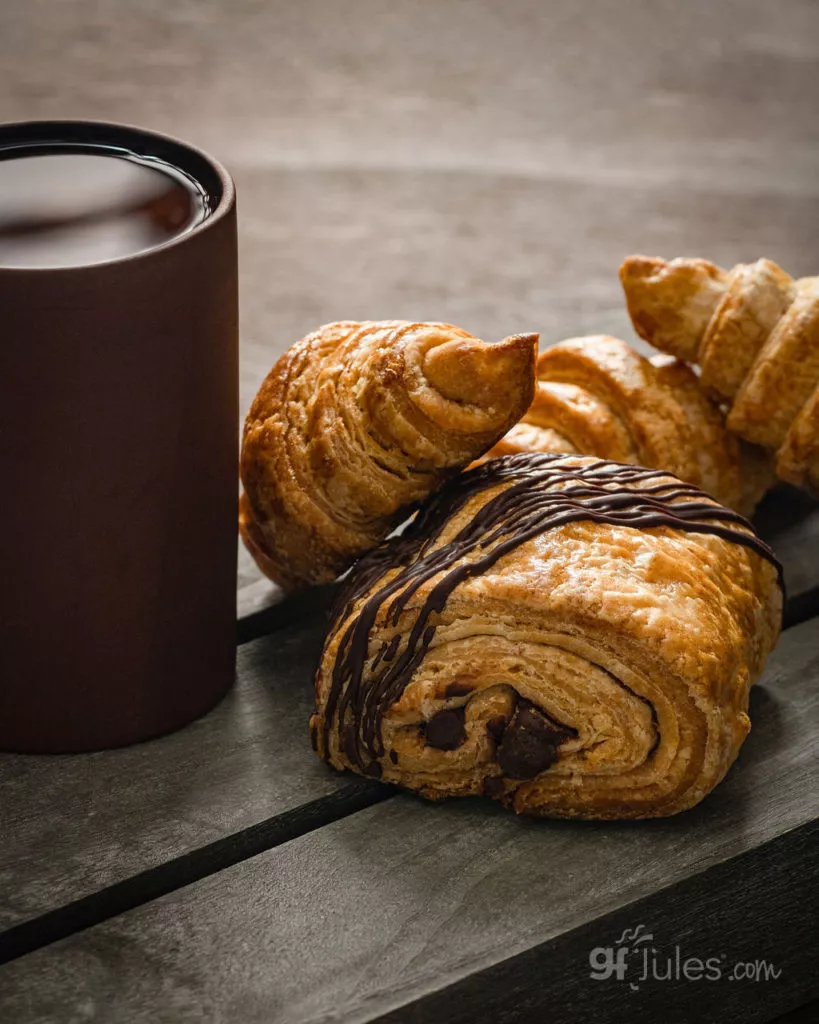
I certainly never doubted that making homemade gluten free croissants would be possible, or that they would be delicious. The one factor that concerned me a bit was how to make them in hours, not days … because who has days to make homemade gluten free croissants? (not me!)
You probably already know that my trademark gluten free recipe style is E.A.S.Y. Typical croissant recipes don’t fall into that category, do they? Kind of like gluten free baklava. Looking for that? Check out this recipe and video from a Greek friend who has used my gfJules Flour for a dozen years to make it, but it ain’t quick, either!
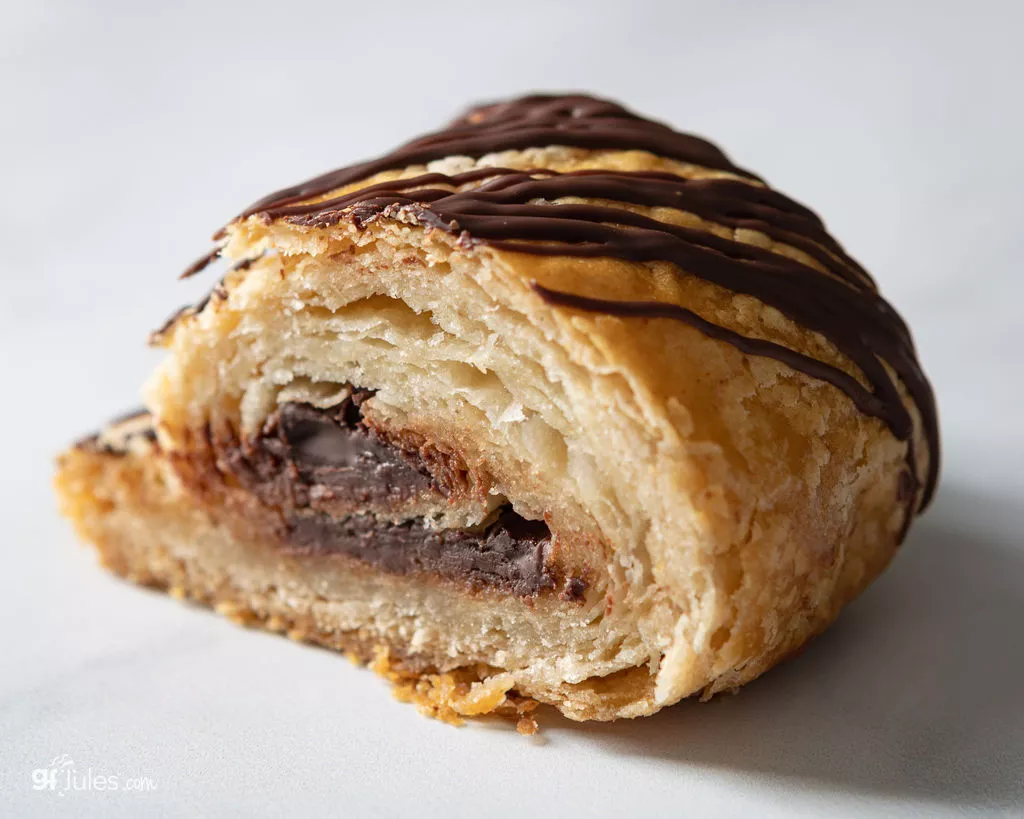
Back to the gluten free croissant recipe at hand. Most recipes take hours, and hours, if not days to make a great croissant. Add gluten free to the mix and, well, you can see where E.A.S.Y. might get lost in the shuffle. Enter Chef Ricardo Mora.
He and I have been working together on a few projects lately (you might have seen his gluten free bûche de Noël made with my gfJules Flour). When I floated the idea to him that perhaps he could undertake this pastry mission, he was actually pretty eager to tackle it.

I have to hand it to him, this recipe did not disappoint! Not only is it legit gorgeous, authentically crispy, flaky and beautiful, but in his recipe, he has managed to skip right over the painstaking many many hours-long process that is so typical with croissant-making.
He embraced the gluten-less benefit of our gluten-free dough and doesn’t add time or steps for resting a dough when it doesn’t need relaxing.
Chef Mora is also gluten free and he was as excited as I was about having delectable gluten free croissants back without days of work to make them.
After so many years of not being able to have croissants, I was so happy with how these turned out. They are rich and buttery. The outside is crispy and flaky while the inside is very soft. GfJules All Purpose Flour Blend with the addition of some psyllium powder made the dough very easy to work with and shape. I will definitely be making these again soon.
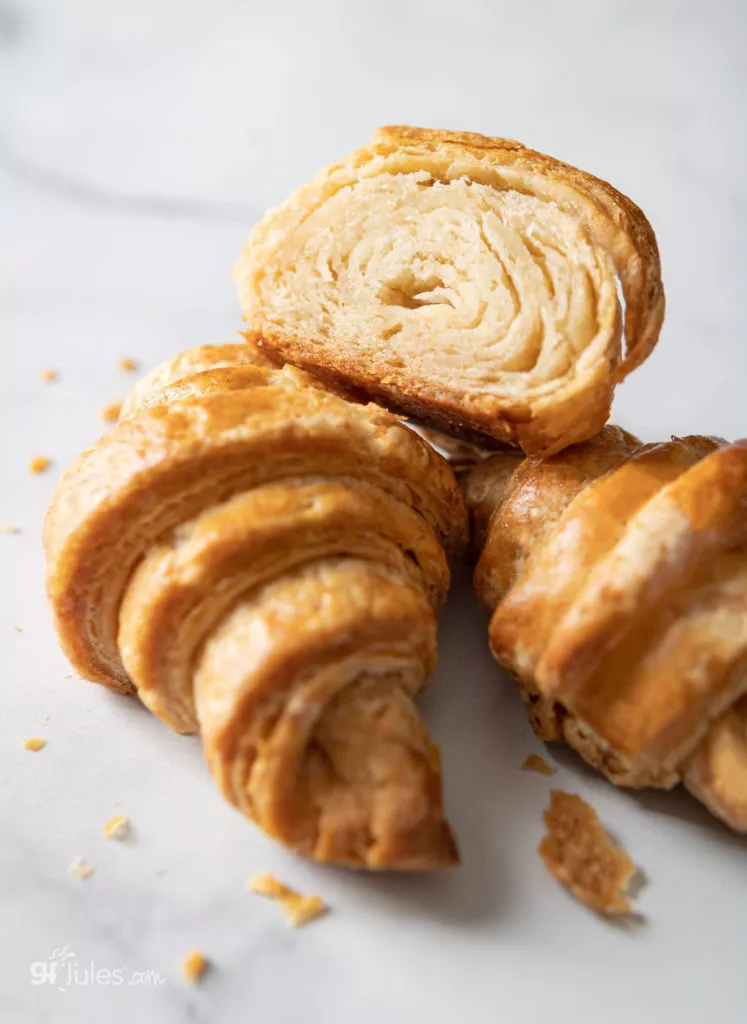
He even came up with a way to make these croissants and freeze them to bake later — genius!
The refrigeration steps are another story. They couldn’t be avoided because, well … butter.

Laminating Gluten Free Dough
Butter (or its vegan counterpart) is KEY to croissants. And the butter lamination step is one of the reasons that croissants have that hallmark flakiness (lamination is the process of sheeting and folding butter into the dough).
But the butter needs to stay cold enough while working with it not to melt, so you’ll likely need to keep sticking the dough + butter back into the refrigerator multiple times to keep it well below its 100°F melting point.
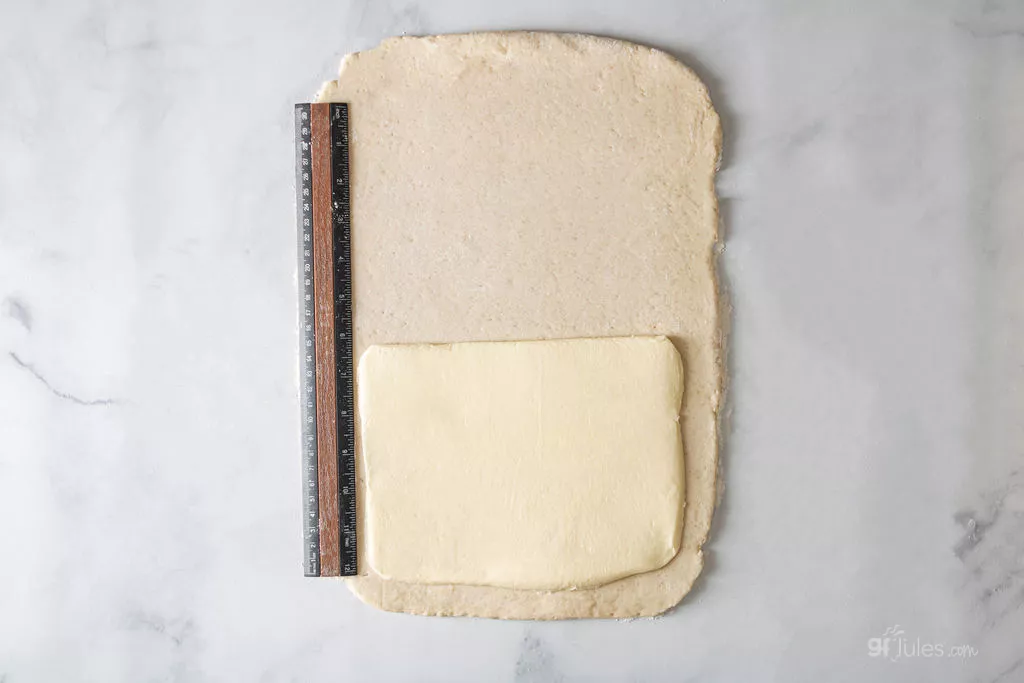
Start by rolling the dough out gently, then place a slab of butter half the dimensions of the rolled dough onto the bottom half of the dough.

Then fold the top of the dough down over the slab of butter and seal the edges lightly (brush off excess gluten free flour so the dough will stick to itself better).
The steps here are called “book folds” — can you see why?
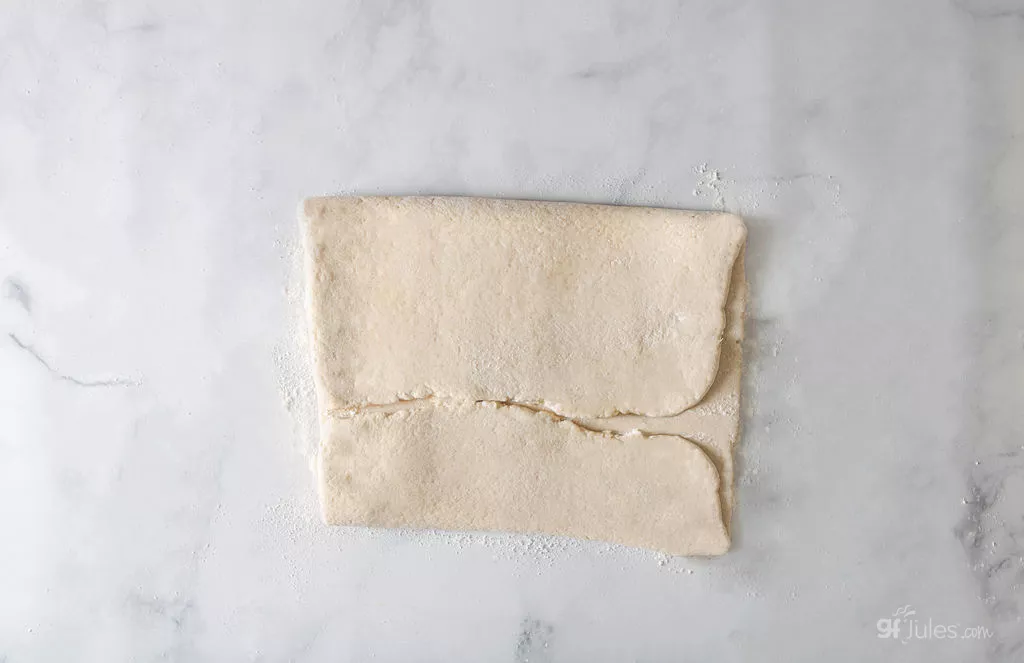
Then rotate the dough one-quarter turn, roll again and fold the top down and the bottom up (see the book!).
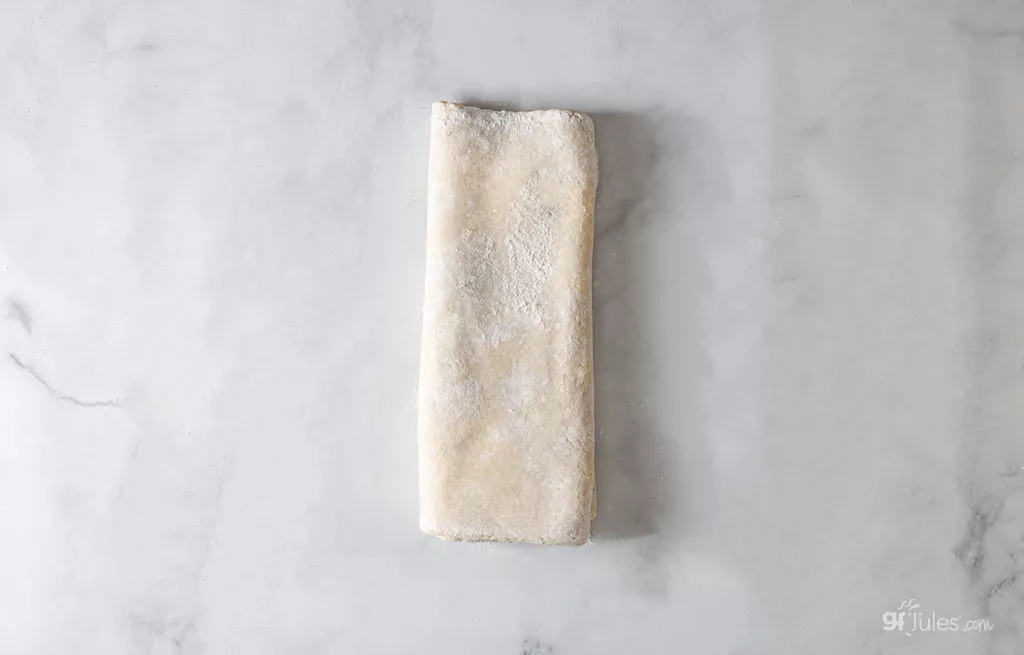
Rotate the dough one-quarter turn, roll out again and repeat the folding steps. (Rotating the dough is made easier with a bench scraper, available on my site)
If you’re really getting into a groove, you can repeat the turning step again, but don’t add more butter, as the butter proportion is perfectly configured for this recipe. Too much butter and you’ll have pastry sitting in a pool of it — not ideal.
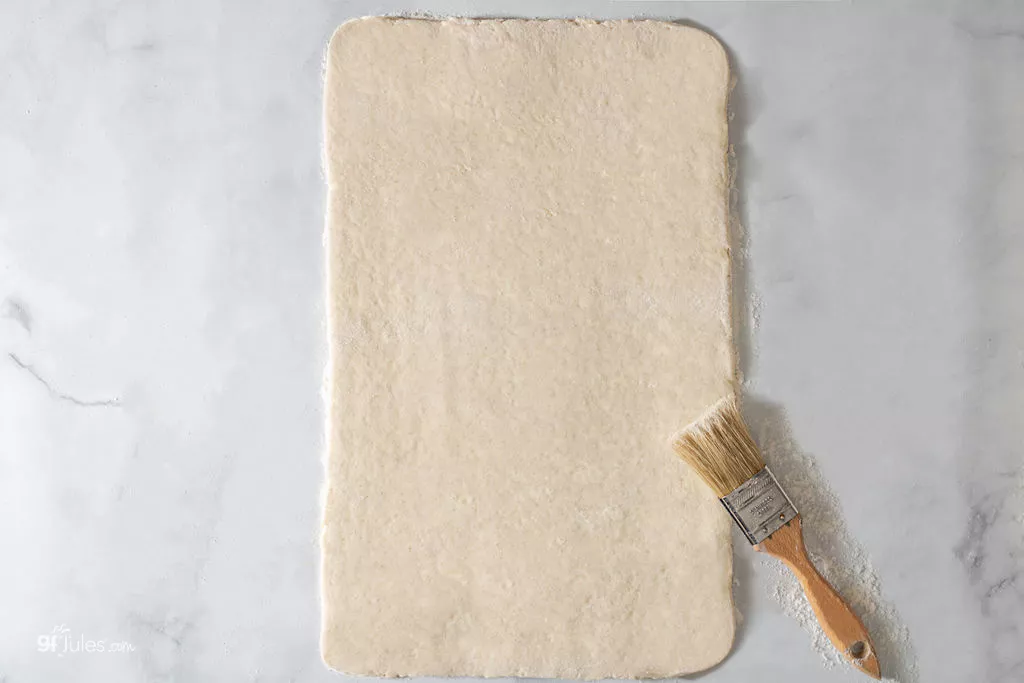
Keep brushing off any excess flour and remember that the butter must remain cold and not melt during this process, so if the dough needs to be wrapped in plastic and refrigerated at any time while you’re working with it, please do so.
Shaping Gluten Free Croissant Dough
After the lamination steps, the dough will go into the refrigerator to get nice and cold. At that point, the shaping fun begins!
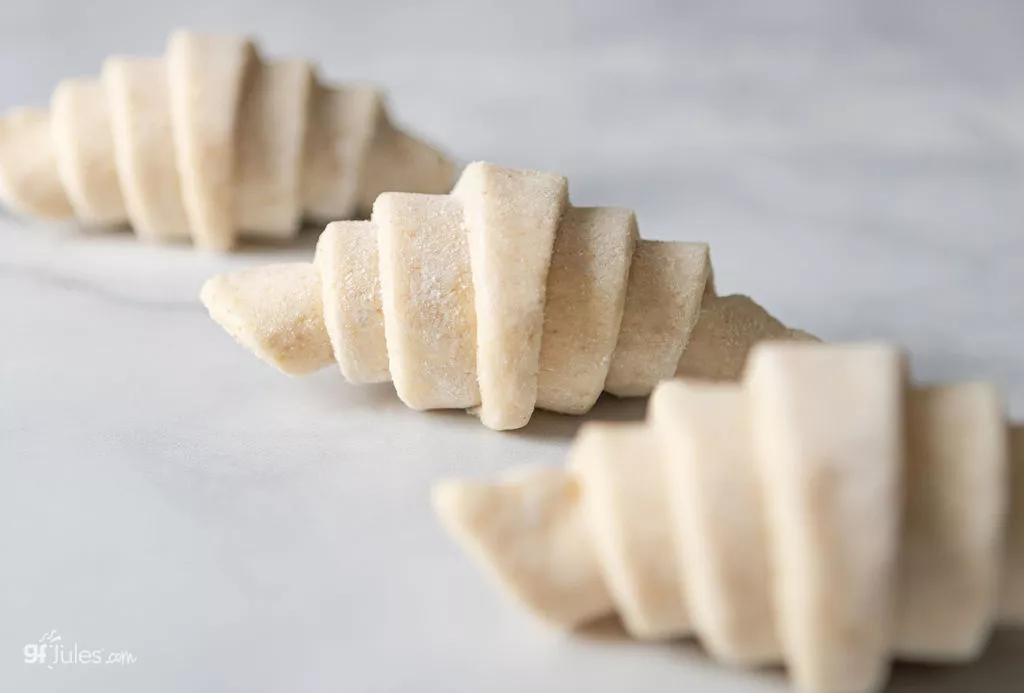
The dough is easy to work with because my gfJules Flour supplies the stretch and pliability needed, and of course the lightness and smooth texture everyone seeks in a great croissant. You can see that the results speak for themselves!

The dough is rolled out again — this time to a much larger dimension — and cut into triangles for traditional croissants or long strips for gluten free pain au chocolat.
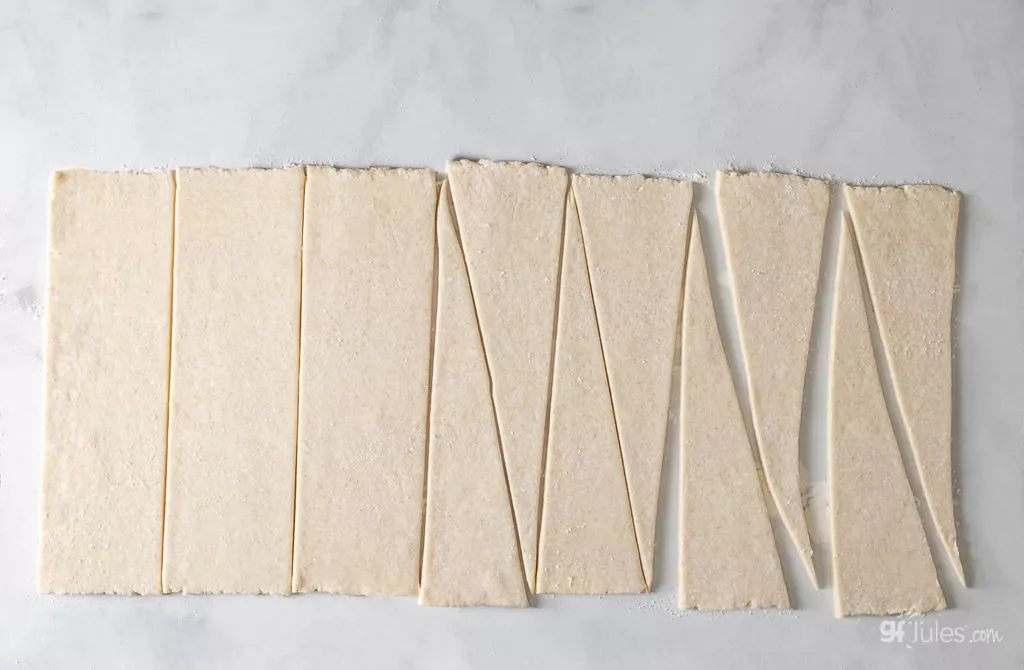
A pizza wheel cutter or pastry wheel is the best tool for this type of cutting (pastry wheels are available on my site).
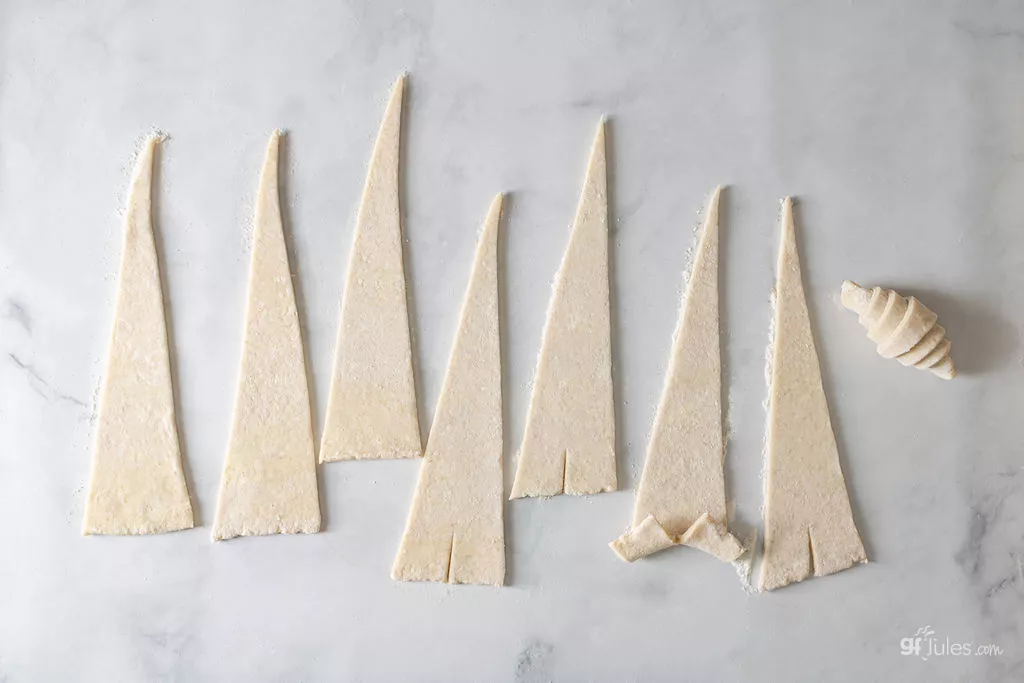
The shaping process is a simple cut-and-roll action (just like making homemade gluten free crescent rolls) that is easy when the dough is cold; if it’s too sticky, put it back into the refrigerator or you can dust with more gfJules Flour.
Remember not to handle the dough too much or melt the butter. If you have to put it back into the refrigerator — do it!
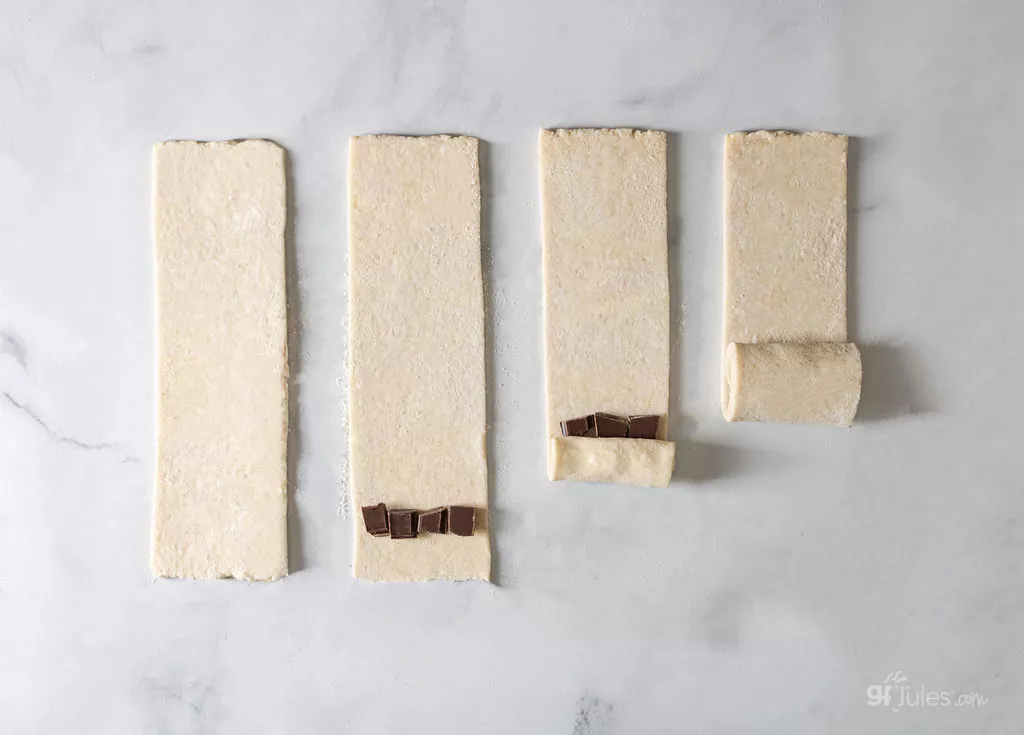
For gluten free pain au chocolat, roll the chocolates up, tucked inside the dough, and lay the rolled croissants on a parchment-lined baking sheet with the seam-side down.
With either style of croissant, brush with an egg wash made of one full egg + 1 tablespoon warm water (or you may use melted butter / vegan butter instead), then set the croissants aside to rise, covered, for one hour. Then brush the croissant dough again with egg wash (or melted butter) before baking to help brown and crisp the edges.

Then the hardest part is waiting for them to come out of the oven because we’re basically waiting for heaven on a plate.
Chef Mora said this about working with the gluten free croissant dough made with my award-winning gfJules Flour:
I’m so glad to have these after a decade of not being able to eat croissants. This dough is so easy to handle and roll out. When they are freshly baked the outside is very crispy and the inside is so soft and buttery. My favorite is having the pain au chocolat. I can’t wait to also try using this dough for other applications, such as almond croissants or kouign amann.

I am so excited to hear what you think when you try this recipe! Will you make a traditional gluten free croissants or a gluten free chocolate croissants? Share your pictures in the comments below!
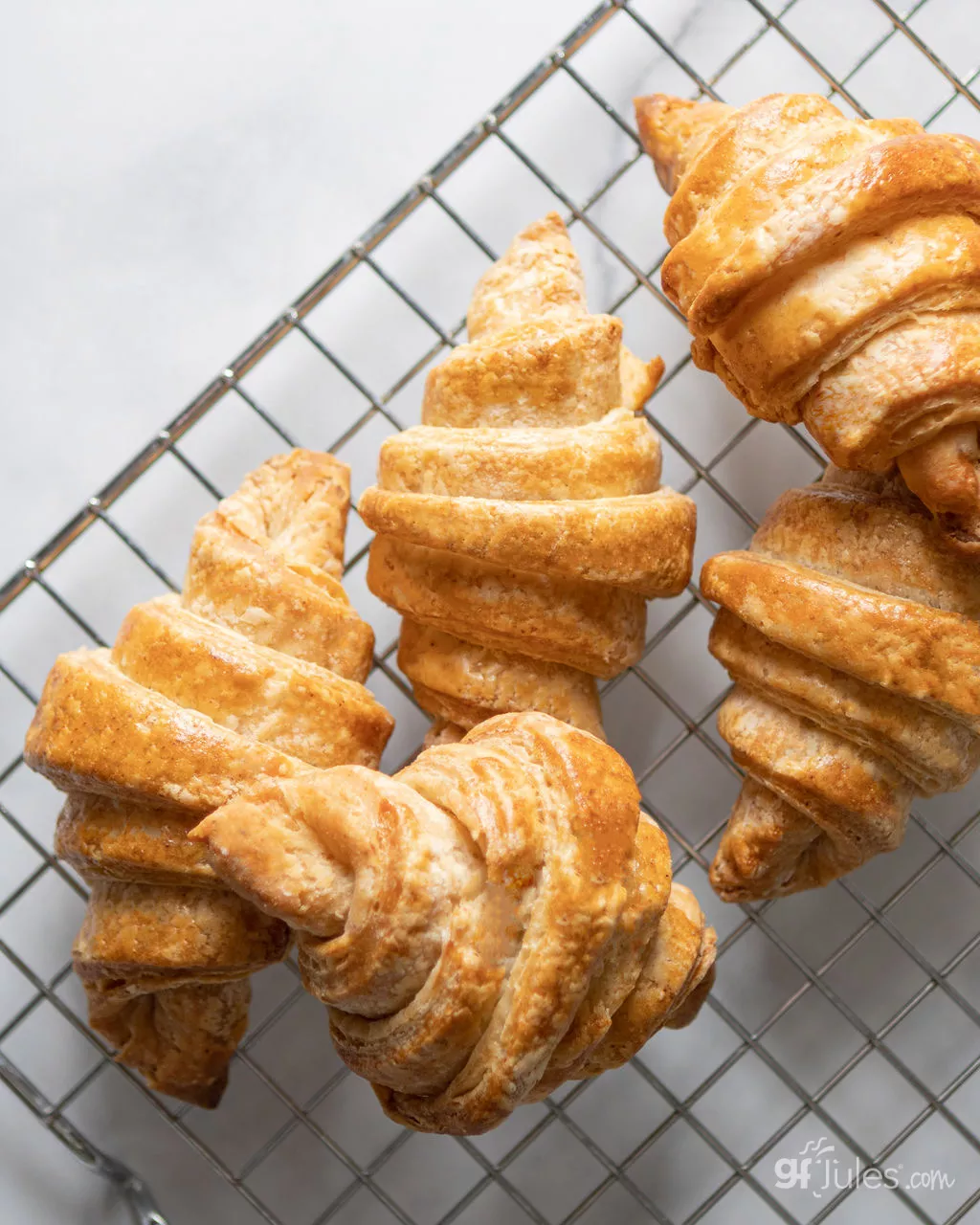
Gluten Free Croissant Recipe
Ingredients
Gluten Free Croissant Dough
- 3 cups (405 grams) gfJules® Gluten Free All Purpose Flour
- 2 packets (14 grams) instant/quick rise yeast (like Red Star®)
- 1/2 cup + 1 Tablespoon white sugar
- 2 1/2 teaspoons salt
- 1 Tablespoon + 2 teaspoons (17.5 grams) baking powder
- 1 Tablespoon + 1 teaspoon (12 grams) psyllium husk powder
- 2 ounces (56 grams) melted butter or vegan butter (like Earth Balance® Buttery Sticks, not Spread)
- 1 1/4 cups (10 ounces/283 grams) warm water
- additional gfJules® Flour for dusting
Butter Block
- 6 ounces (170 grams) butter or vegan butter, softened (like Earth Balance® Buttery Sticks, not Spread)
for Chocolate Croissants
- 5-6 ounces chopped high quality milk or dark chocolate
Egg wash
- 1 large egg + 1 Tablespoon water whisked (egg-free: use melted vegan butter)
Instructions
- For butter block, allow butter to soften to room temperature. Place between two pieces of parchment or wax paper. Using rolling pin, crush butter and roll out to 8”x6”. A spatula or bench scraper can be used to square off sides evenly. If butter gets too soft, it can be placed briefly in the fridge to unstick from parchment paper, but butter should be soft and pliable when enclosing in dough.
- To make dough, whisk together all dry ingredients (including quick rise yeast) in a large mixing bowl. Combine water and melted butter in a separate bowl. While mixer is running with paddle attachment, gradually add liquids. Allow dough to come together, then increase speed to medium and mix until very soft and evenly mixed, about 1-2 minutes.
- Remove from bowl and knead lightly to bring dough together. It should not be crumbly, so add more warm water if needed.
- Place dough on floured surface and roll out to 14”x10”.
- Brush off excess flour from top of dough and place butter block on bottom half of dough, leaving some space along bottom and sides of butter in order to seal dough. Fold top half of dough down over butter and seal dough all around butter block.
- Give dough a quarter turn and roll out again after sealing butter. Continue flouring above and beneath the dough as necessary so dough does not stick. Roll out dough to 16”x10” to make first turn. If butter or dough gets too soft at any point, wrap and place in fridge for 30 minutes to an hour.
- Once dough is rolled out to 16”x10”, brush off any excess flour and fold top of dough down towards the center of dough. Fold bottom half up towards the center as well (like a book). Brush off any excess flour again, and give the dough a quarter turn; fold top portion down and the bottom portion up again, like a book.
- Repeat these book fold steps one more time. If necessary, wrap dough and refrigerate between folding in order to keep the butter from melting.
- After completing second set of book folds, wrap dough and place in fridge for one hour.
- Roll out dough again to 10”x25”. Using a pastry wheel, pizza cutter or a very sharp knife, mark dough along top and bottom at every 3” or for larger croissants at every 5”. Cut straight through from top to bottom marks. Leave as rectangular strips if making chocolate croissants. For plain croissants, cut diagonally across strips of dough to make long triangles.
- Brush off any excess flour from dough before shaping, as the flour will make it more difficult to get the dough to stick to itself in shaping.
To make Gluten Free Chocolate Croissants:
- Place a few pieces of chocolate along bottom of each dough strip. Roll up slightly to cover, and then add another row of chocolate and roll up remaining dough. Place on sheet pan, seam side down. Cover with plastic wrap and allow to rise in a warm place for one hour.
To make Original Gluten Free Croissants:
- Take triangular strips of dough with point facing away from you. Cut a small slit on bottom of strip. Spread pieces apart and roll up croissant tightly. Place on sheet pan, seam side down, and cover with plastic wrap. Allow to rise in a warm place for one hour.
To Bake:
- While croissants are rising, preheat oven to 400°F.
- After rising, brush croissants with egg wash (1 full egg whisked to mix with 1 Tablespoon warm water) and place in preheated oven. Bake until evenly browned, about 35-40 minutes. For egg-free recipe, brush with melted butter, though croissants will not brown as much.
- Allow to cool on cooling rack. Best when freshly baked, but can be reheated to eat the following day. For chocolate croissants, melt some additional chocolate and drizzle over baked croissants.
To Freeze and Bake Later:
- Follow all the recipe steps to shape the dough (for either type of gluten free croissant) but instead of proofing, wrap each croissant individually in plastic and place in a freezer bag. Place the freezer bag into the freezer and store for up to one week. (these may keep longer, but we only tested them for one week)
- When serving, remove from the freezer, unwrap and place on a parchment-lined sheet pan. Cover the croissants on the tray with plastic wrap and set aside to come to room temperature for about 2 hours.
- Brush with egg wash or melted butter, recover with plastic wrap, and place in a warm location to proof for one hour.
- Brush with egg wash or melted butter again and bake as directed above.
** Please keep in mind that nutrition information provided is per serving, which may vary. While we have taken care to provide you with the most accurate nutritional values possible, please note that this information may differ significantly depending on the exact ingredients and brands that you choose to use to make this recipe. Additionally, where options are given for ingredients, the resulting calculation may include all ingredient options instead of only one per line, skewing the totals significantly.
Pin for later!
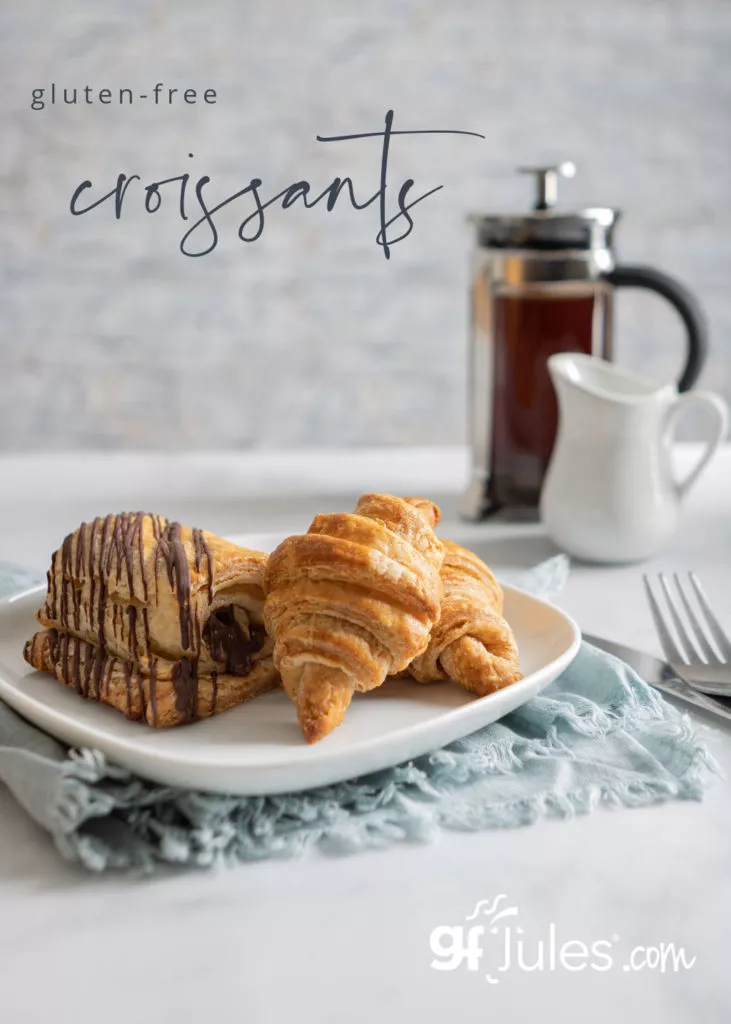














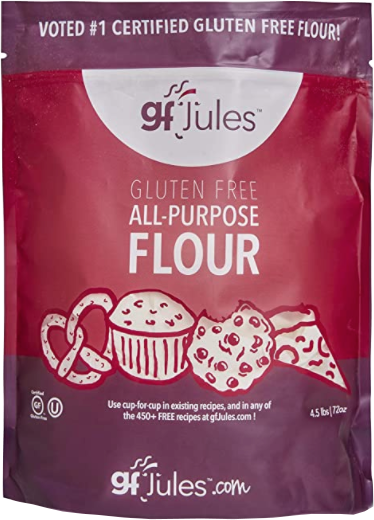
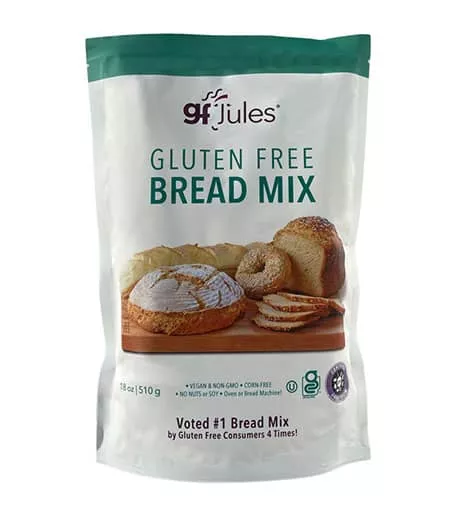

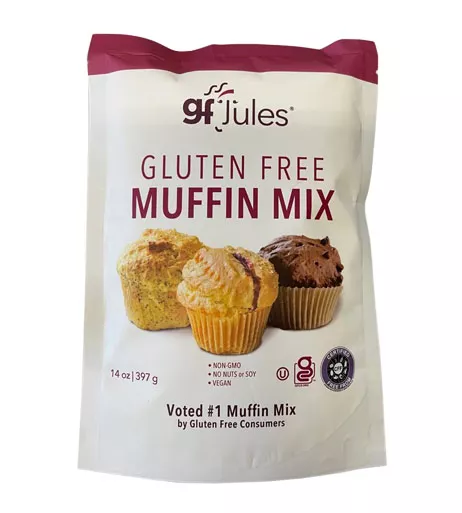


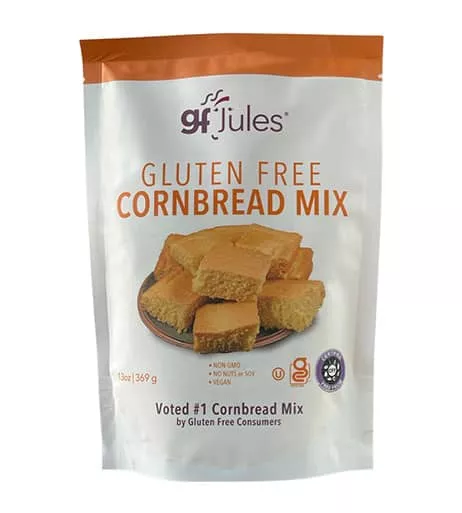




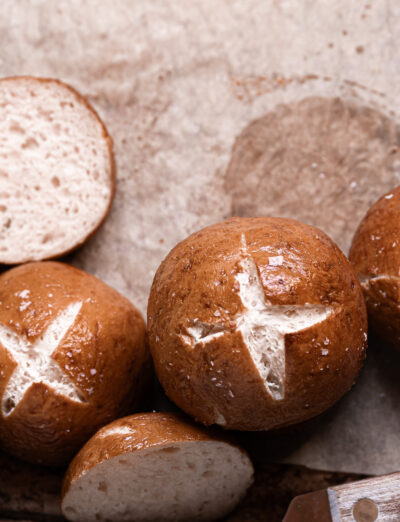
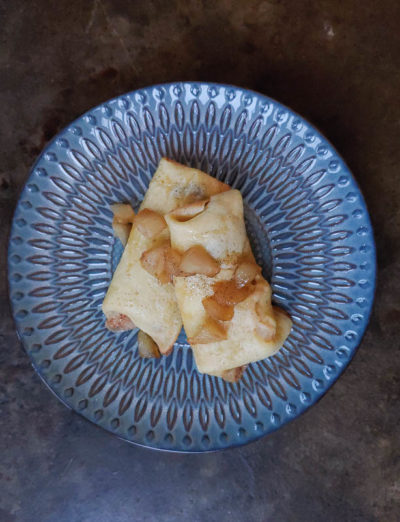

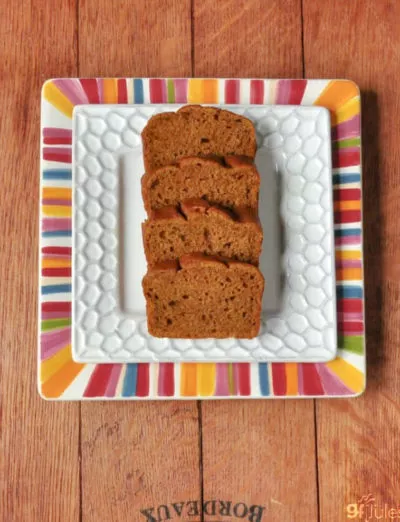







I made these 3 times and they turned out absolutely fabulous! And now all of a sudden I have tried to make them 3 more times and they haven’t turned out. And now as I am making them again my dough is cracking when I’m trying to roll it out.
Hmmm. I wonder what the difference could be? What butter are you using? Is the weather very different now that you’re making them again?
~jules
I can’t believe how delicious these gluten-free croissants turned out! The texture was spot on, and they were so flaky. Thanks to gfJules for sharing this amazing recipe! I can’t wait to try more of your gluten-free creations! 🥐❤️
I just tried this gluten-free croissant recipe, and I’m amazed at how flaky and delicious they turned out! The #1 Flour & Mixes made a huge difference. Thank you, gfJules, for this fantastic recipe! Can’t wait to share these with my friends!
This gluten-free croissant recipe is a game changer! I can’t believe how flaky and delicious they turned out. The #1 Flour really made a difference. Can’t wait to try more recipes from gfJules!
So glad to hear these gluten free croissants turned out well for you!
~jules
can i use king arthur’s gluten free flour?
Hi Madison, I have no way of knowing how that flour will perform in this recipe, since it was developed for my gfJules Flour. Check out this article on gluten free flours and see where you think it falls. I’d hate to recommend you try it and waste ingredients if it won’t perform the same, since GF flour blends are all so different, and I do know that flour is somewhat gritty, so that wouldn’t be ideal for a croissant!
~jules
Hi Jules! Would it be possible to use your corn-free flour blend for this recipe? My sister has been craving croissants but she’s allergic to corn as well as wheat. Would I need to do any modifications to the recipe?
Thanks!
Hi Clari, you should be able to do that, noting that the corn-free blend is 140Gr/cup. I haven’t had a chance to try this recipe yet with that blend, so let me know how it goes!
~jules
Why do all the gluten free croissant recipes have SO MUCH SUGAR in them? I can’t stand sweet bread! King Arthur’s recipe for regular croissants had twice as much flour and half as much sugar. So what is it with GF recipes that people put so much sugar in them? I just won’t do it.
Hi, you can cut the sugar back some in this recipe. It’s there for a couple reasons: to activate the yeast; to help brown the dough and get it crispy on the top like a croissant should be; and flavor. Only the second reason is specific to gluten free, so you’ll just have to play with the recipe yourself to see how low you can go on the sugar and still achieve the proper texture.
~jules